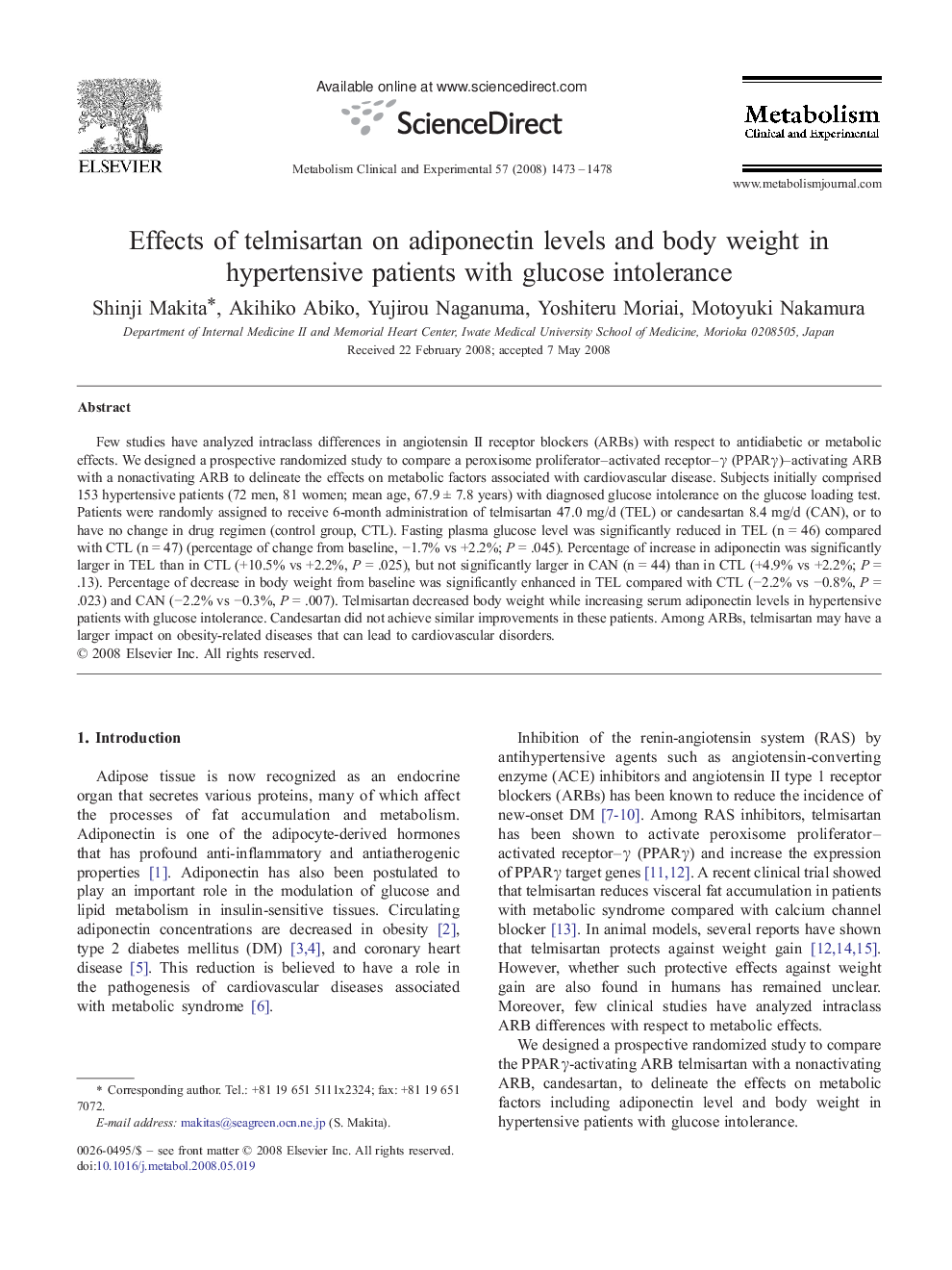| Article ID | Journal | Published Year | Pages | File Type |
|---|---|---|---|---|
| 2806198 | Metabolism | 2008 | 6 Pages |
Few studies have analyzed intraclass differences in angiotensin II receptor blockers (ARBs) with respect to antidiabetic or metabolic effects. We designed a prospective randomized study to compare a peroxisome proliferator–activated receptor–γ (PPARγ)–activating ARB with a nonactivating ARB to delineate the effects on metabolic factors associated with cardiovascular disease. Subjects initially comprised 153 hypertensive patients (72 men, 81 women; mean age, 67.9 ± 7.8 years) with diagnosed glucose intolerance on the glucose loading test. Patients were randomly assigned to receive 6-month administration of telmisartan 47.0 mg/d (TEL) or candesartan 8.4 mg/d (CAN), or to have no change in drug regimen (control group, CTL). Fasting plasma glucose level was significantly reduced in TEL (n = 46) compared with CTL (n = 47) (percentage of change from baseline, −1.7% vs +2.2%; P = .045). Percentage of increase in adiponectin was significantly larger in TEL than in CTL (+10.5% vs +2.2%, P = .025), but not significantly larger in CAN (n = 44) than in CTL (+4.9% vs +2.2%; P = .13). Percentage of decrease in body weight from baseline was significantly enhanced in TEL compared with CTL (−2.2% vs −0.8%, P = .023) and CAN (−2.2% vs −0.3%, P = .007). Telmisartan decreased body weight while increasing serum adiponectin levels in hypertensive patients with glucose intolerance. Candesartan did not achieve similar improvements in these patients. Among ARBs, telmisartan may have a larger impact on obesity-related diseases that can lead to cardiovascular disorders.
